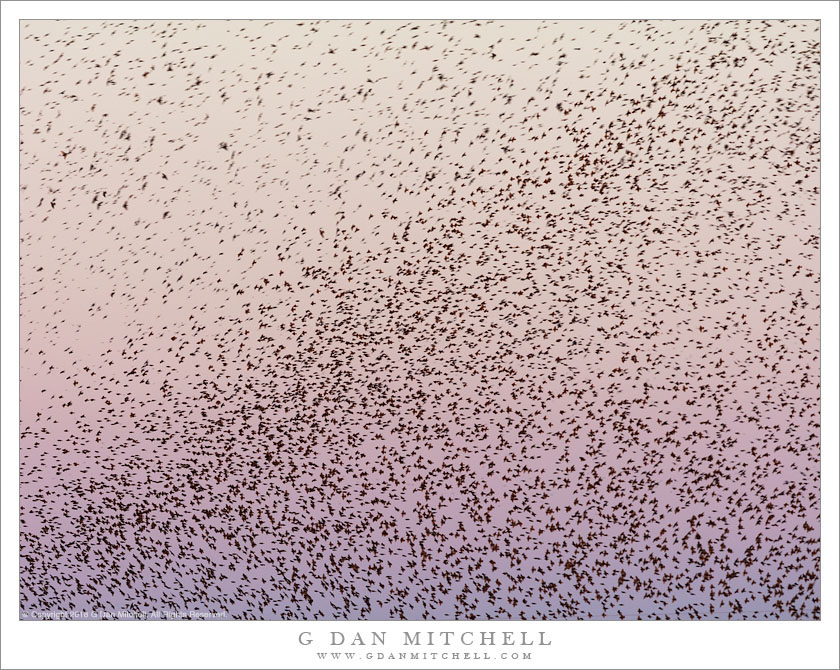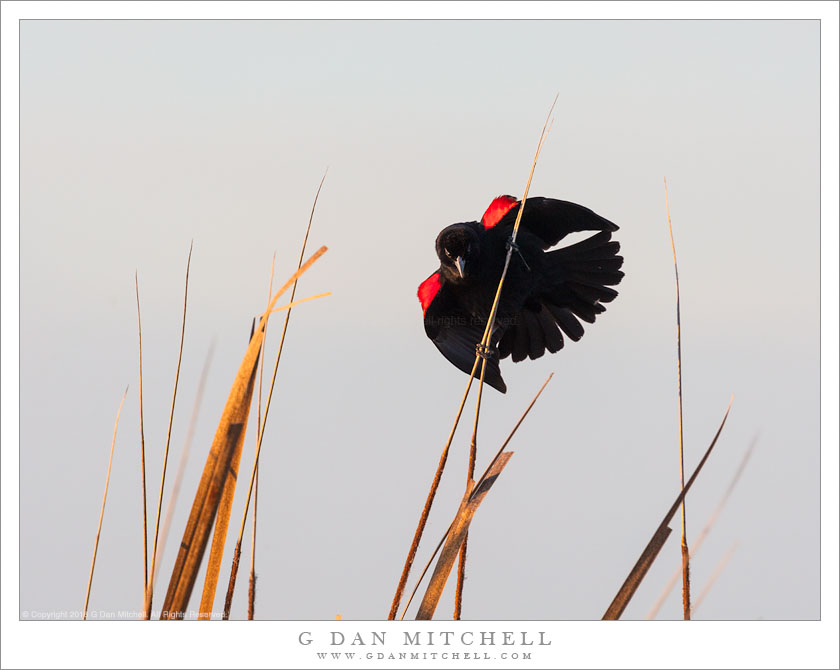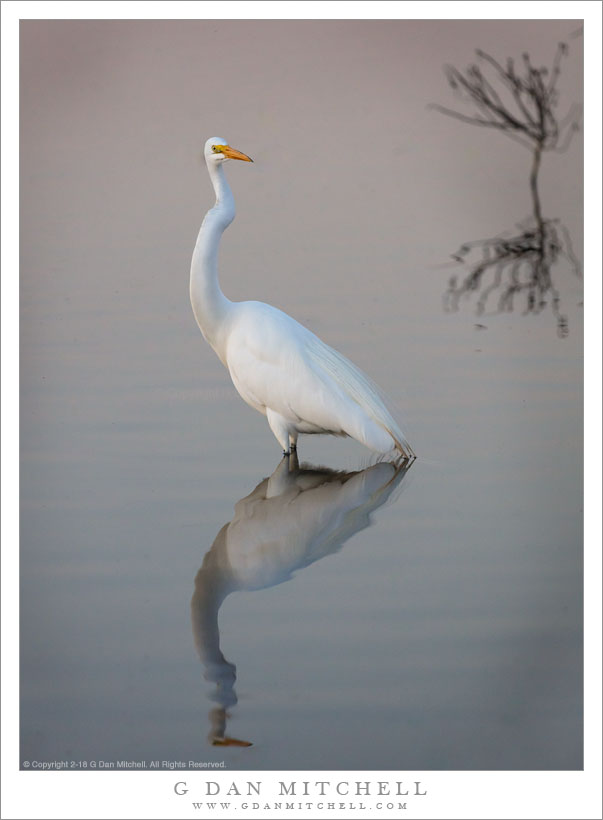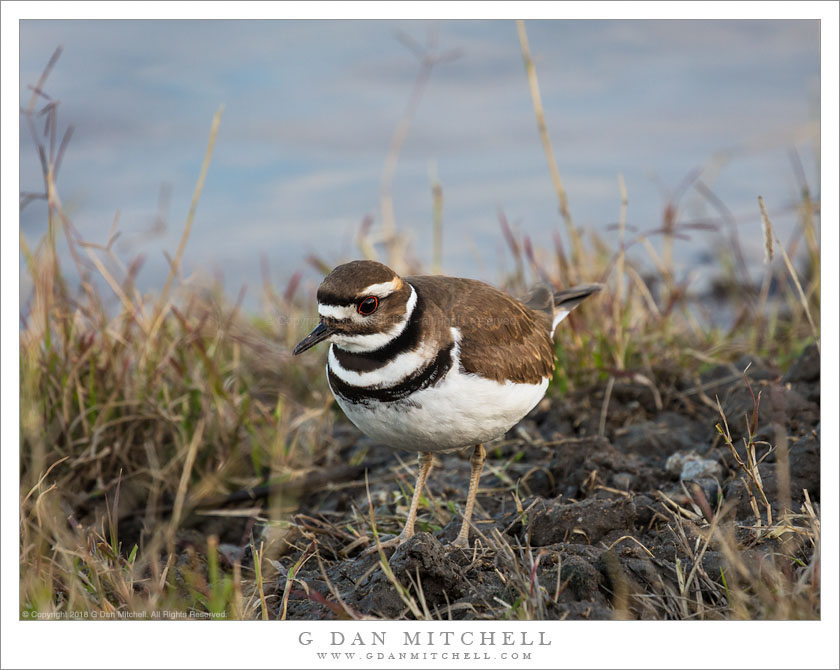
Red-Wing Blackbirds, Twilight. © Copyright 2018 G Dan Mitchell – all rights reserved.
A huge flock of red-wing blackbirds wheels in the twilight sky
First, a confession. Although I’m almost positive that the little black spots in this photograph are individual red-wing blackbirds, I was not actually close enough to verify. I had seen quite a few of those specific birds here earlier and none (or very few) of the birds that I might mistake for them, such as tricolor blackbirds. The rediwings are ubiquitous here in California and, I suspect, many other places. Before this past year I had mostly noticed them as individuals or in very small groups, often perched on a fence or tree or similar. I also sometimes saw them in groups of perhaps a few hundred.
This was the first year that I saw these small birds collect into extremely large group of many thousands of individuals. (In at least one case, I would estimate that there might have been multiple tens of thousands. On that day I saw then in the far distance through light fog in the very early morning — too far away to photography.) These really big groups sometimes perform remarkable group aerial maneuvers, with the entire flock spontaneously changing directions, ascending, descending and forming unusual patterns in the sky. In this photograph we see a diagonal boundary between the main group and a smaller group against twilight sky.
 G Dan Mitchell is a California photographer and visual opportunist. His book, “California’s Fall Color: A Photographer’s Guide to Autumn in the Sierra” is available from Heyday Books and Amazon.
G Dan Mitchell is a California photographer and visual opportunist. His book, “California’s Fall Color: A Photographer’s Guide to Autumn in the Sierra” is available from Heyday Books and Amazon.
Blog | About | Flickr | Twitter | Facebook | Google+ | LinkedIn | Email
All media © Copyright G Dan Mitchell and others as indicated. Any use requires advance permission from G Dan Mitchell.



